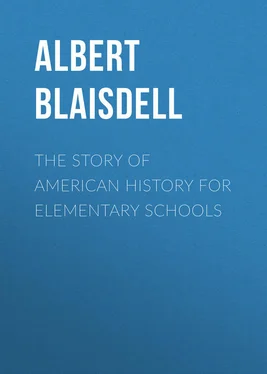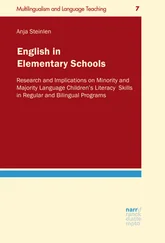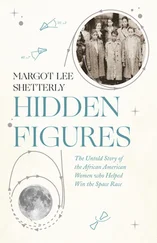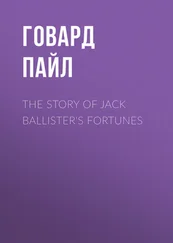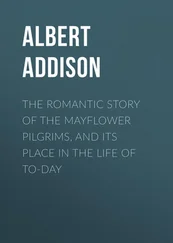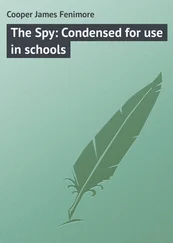Albert Blaisdell - The Story of American History for Elementary Schools
Здесь есть возможность читать онлайн «Albert Blaisdell - The Story of American History for Elementary Schools» — ознакомительный отрывок электронной книги совершенно бесплатно, а после прочтения отрывка купить полную версию. В некоторых случаях можно слушать аудио, скачать через торрент в формате fb2 и присутствует краткое содержание. ISBN: , Жанр: foreign_antique, foreign_prose, Историческая проза, на английском языке. Описание произведения, (предисловие) а так же отзывы посетителей доступны на портале библиотеки ЛибКат.
- Название:The Story of American History for Elementary Schools
- Автор:
- Жанр:
- Год:неизвестен
- ISBN:http://www.gutenberg.org/ebooks/34600
- Рейтинг книги:5 / 5. Голосов: 1
-
Избранное:Добавить в избранное
- Отзывы:
-
Ваша оценка:
- 100
- 1
- 2
- 3
- 4
- 5
The Story of American History for Elementary Schools: краткое содержание, описание и аннотация
Предлагаем к чтению аннотацию, описание, краткое содержание или предисловие (зависит от того, что написал сам автор книги «The Story of American History for Elementary Schools»). Если вы не нашли необходимую информацию о книге — напишите в комментариях, мы постараемся отыскать её.
The Story of American History for Elementary Schools — читать онлайн ознакомительный отрывок
Ниже представлен текст книги, разбитый по страницам. Система сохранения места последней прочитанной страницы, позволяет с удобством читать онлайн бесплатно книгу «The Story of American History for Elementary Schools», без необходимости каждый раз заново искать на чём Вы остановились. Поставьте закладку, и сможете в любой момент перейти на страницу, на которой закончили чтение.
Интервал:
Закладка:
That everything might be done in a business-like way, Penn sent word to various tribes of Indians that he would meet them on a certain day to make a treaty. He wanted them to hear what he had to say. He sent word to them that he was a man of peace, and no firearms would be brought to the meeting. The Indians gladly accepted Penn's invitation.
98. The Celebrated Treaty with the Indians.– On the chosen day they came from far and near. They met under the branches of a great elm tree a little north of Philadelphia. This giant son of the forest, called ever afterward "The Treaty Tree," became an object of deep interest. It was protected with extreme care. During the Revolutionary war, even the British officers posted guards around it to prevent its branches from being used for firewood. The venerable tree blew down some ninety years ago. Its rings proved it to be two hundred and eighty-three years of age. A monument with a suitable inscription now marks the spot where Penn and the Indians met to pledge in "unbroken faith."
First, there was a feast of good things to eat, and numerous presents were given to the delighted red men. The chiefs then seated themselves on the ground and the council began. Penn carried no arms, wore no uniform, and had no soldiers. He was at this time thirty-eight years old, graceful and fine-looking, was dressed in a suit of drab-colored clothes, had a blue sash around his waist, and wore a broad-brim hat, which he did not take off for the sake of fashion or ceremony.
The Indians, seated around their chiefs, listened attentively while the "Quaker King" spoke. He told them that the English and the Indians were to obey the same laws, and both were to be equally protected in their rights. No advantage should be taken on either side, but all should be openness and love; that the great God above was the Father of both white and red men, and that all were brothers and should live together in peace. His words, so full of kindness, good will, and justice, won the hearts of the dusky natives.
"We will live in peace with William Penn and his children," said the Indians, "as long as the sun and moon endure." This treaty was never broken.
99. The Indians take Penn at his Word, and live afterwards at Peace with the Quakers.– After this talk was over, the pipe of peace was lighted and passed round, and each took a whiff.
The Indians took Penn at his word. They believed in him and they kept their part of the compact. It is said that not a drop of Quaker blood was ever shed by an Indian, so much did the red men love and honor the name of William Penn.
The good Quaker often visited the Indians at their councils, or at their "powwows," as their festive gatherings were called. He went in and out among them, visited them in their wigwams, and ate roasted corn and hominy with them. He had frolics with the Indian children, joined in the outdoor games of the warriors, and talked to them about their faith in God, whom they called the Great Spirit.
100. The Quakers prosper; Trials of Penn in his Old Age.– We are not surprised that the Quaker settlers prospered. In two years there were six hundred houses; also schools and a printing press. Philadelphia had grown more in three years than New York City in half a century. After a few years the founder of the colony went back to England. He continued to watch over his far-away colony, sending out emigrants and in every way promoting its interest.
After some time Penn returned to this country, but remained only two years. In his old age he met with sore trials. His son disgraced him by his riotous living, his trusted agent proved dishonest, and at length the good Quaker was financially ruined and was flung into prison for debt. Not long after his release he died at the age of seventy-eight.
101. Subsequent Prosperity of the Quaker Colony.– When it once became known that in Penn's colony a man could worship God as he pleased, enjoy personal rights; that poor men could own their farms, and that there was no dread of the Indians, we are not surprised that colonists quickly flocked to Pennsylvania. This settlement surpassed all others in America in rapid growth, and was for many years more prosperous and comfortable than any other. About one-third of the inhabitants were Quakers, and these were always a thrifty and peaceful people.
At the close of the Revolutionary war Philadelphia was larger than either Boston or New York. Among the thirteen colonies Pennsylvania ranked third in influence and population, being surpassed by none but Virginia and Massachusetts.
CHAPTER VIII.
THE FRENCH AND INDIAN WARS
102. Prosperity of the Early Colonists.– For fifty years or more after the colonists had established their homes in the wilderness of the New World, they were growing rich and strong. They cleared away forests, planted fields, traded with the Indians, and built for themselves more comfortable houses.
Especially was this the case during the years when Cromwell and his party were in power in England, and until after Charles II was restored to the English throne. The settlers boldly pressed further and further on, crossing great rivers, climbing steep mountains, and building log cabins in far distant regions.
The colonists in Pennsylvania and Virginia pushed westward into the valley of the Ohio, while the English settlers in New York made their way through the forest toward the Great Lakes.
103. The French in North America.– More than seventy years before Jamestown was settled, a French explorer by the name of Cartier had entered the Gulf of St. Lawrence, sailed up the river of the same name, and taken possession of the country in the name of France. This same region became afterwards the great French stronghold in America.
A Frenchman by the name of Champlain sailed up the beautiful river St. Lawrence, and was so charmed with the scenery of the country that in 1608, the year after Jamestown was settled, he began to plant a colony on the site of what is now Quebec. The settlement soon became a city and the capital of the French possessions in America.
The French were also the first explorers of the vast interior regions of our country. Their fur traders and trappers kept on good terms with the Indians, and slowly pushed along the shores of the Great Lakes until they had established a chain of trading-posts from the St. Lawrence to Lake Superior. About the time of King Philip's War in New England Father Marquette discovered the upper Mississippi, and floated down this great river nearly as far as the mouth of the Arkansas.
Конец ознакомительного фрагмента.
Текст предоставлен ООО «ЛитРес».
Прочитайте эту книгу целиком, купив полную легальную версию на ЛитРес.
Безопасно оплатить книгу можно банковской картой Visa, MasterCard, Maestro, со счета мобильного телефона, с платежного терминала, в салоне МТС или Связной, через PayPal, WebMoney, Яндекс.Деньги, QIWI Кошелек, бонусными картами или другим удобным Вам способом.
Интервал:
Закладка:
Похожие книги на «The Story of American History for Elementary Schools»
Представляем Вашему вниманию похожие книги на «The Story of American History for Elementary Schools» списком для выбора. Мы отобрали схожую по названию и смыслу литературу в надежде предоставить читателям больше вариантов отыскать новые, интересные, ещё непрочитанные произведения.
Обсуждение, отзывы о книге «The Story of American History for Elementary Schools» и просто собственные мнения читателей. Оставьте ваши комментарии, напишите, что Вы думаете о произведении, его смысле или главных героях. Укажите что конкретно понравилось, а что нет, и почему Вы так считаете.
